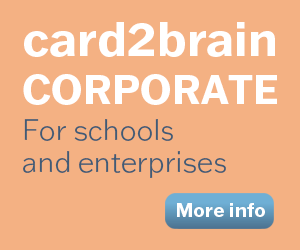Business Ethics
Course Business Ethics FHNW (Business Administration IM)
Course Business Ethics FHNW (Business Administration IM)
Set of flashcards Details
| Flashcards | 246 |
|---|---|
| Language | English |
| Category | Religion/Ethics |
| Level | University |
| Created / Updated | 05.01.2025 / 15.01.2025 |
| Weblink |
https://card2brain.ch/cards/20250105_business_ethics?max=40&offset=160
|
| Embed |
<iframe src="https://card2brain.ch/box/20250105_business_ethics/embed" width="780" height="150" scrolling="no" frameborder="0"></iframe>
|
Which-one(s) of the following statement(s) is(are) correct?
Moral intensity and ethical issue intensity are similar concepts because they both relate to the individual’s perception of social or organisational pressure and the harm they believe their decisions will have on others.
Moral intensity is different from ethical issue intensity because the former relates to a company’s moral obligations regarding its corporate citizenship, and the latter relates to the importance of an event in the eyes of an individual person.
Regarding ethical issue intensity, it can be argued that senior employees and those with administrative authority play an important role as they typically dictate an organisation’s stance on ethical issues.
All of the following are true regarding ethical decision making and leadership except?
Please fill in the missing part in a manner consistent with business ethics.
In what he called the _____, John Rawls examined how individuals would formulate principles if they did not know what their future position in society would be.
All of the following are true with regards to the implementation of principles and core values in ethical decision making except?
Please fill in the missing part in a manner consistent with business ethics.
Institutions are important in establishing a foundation for normative values. Therefore, _____ institutions (e.g. religion, education, family units) also impact a firm’s normative values inasmuch as they help individuals form their personal values and the moral philosophies they bring to the workplace. In a(n) _____ context, societal trends influence which values to adopt as well as when to adapt decisions to take into account new concerns.
Please complete the sentence below in a manner consistent with business ethics.
Regarding the locus of control, employees that believe they control the events in their lives by their own effort and skill believe in
All of the following are true with regards to ethical decision making in business except?
The importance of a decision in the eyes of an organisation relates to which part of the ethical decision-making framework?
Please fill in the missing part in a manner consistent with business ethics.
To establish sexual harassment, an employee must understand the definition of a hostile work environment. To assert a hostile work environment, an employee need not prove that someone’s conduct seriously affected his or her psychological well-being or that it caused an injury; the decisive issue is whether the conduct interfered with the claimant’s work _____.
Please fill in the missing part in a manner consistent with business ethics.
The point at which a lie becomes unethical in business is based on the _____ of the statement and its _____ to distort the truth.
Please fill in the missing part in a manner consistent with business ethics. (p. 135/moderate)
A(n) _____ is a problem, situation, or opportunity that requires an individual, group, or organisation to choose among several actions that must be evaluated as right or wrong, ethical or unethical.
Which-one of the following statements is most likely to be correct?
Which-one(s) of the following statement(s) is(are) correct?
Fraud is the engagement of one or more individuals in intentional deceptive practices to advance their own interests over those of the organisation or some other group.
Commission lying is creating a perception or belief by words that intentionally deceive the receiver of the message.
Omission lying is intentionally not informing others of any differences, problems, safety warnings, or negative issues relating to the product or company that significantly affect awareness, intention, or behaviour.
Which-one(s) of the following statement(s) is(are) correct?
The implementation of a stakeholder perspective includes the identification of stakeholder groups as well as the identification of stakeholder issues. In this context, the level of stakeholders’ power and legitimacy determines the degree of urgency in addressing their needs.
The prioritization of stakeholders and issues lead to the allocation of the company’s resources. In this context, for example, the urgency of a social responsibility challenge is primarily determined by the possible legal consequences of the issue at hand. The absence of any negative legal implications for the company always indicates a low degree of urgency of the issue at hand.
Gaining stakeholder feedback is an important step in the implementation of a stakeholder perspective. This is especially true in the case of external stakeholders. Relevant and honest feedback from internal stakeholders is by nature much easier to obtain.
Please fill in the missing part in a manner consistent with business ethics.
A stakeholder orientation involves activities and processes within a system of social institutions that facilitate and maintain value through exchange relationships with _____.
Which of the following groups are not secondary stakeholders?
Which-one of the following statements is most likely to be correct?
Which-one(s) of the following statement(s) is(are) correct?
The prime goal of an ethical culture is the maximisation of the use of principles that contribute to ethical reasoning in difficult or new situations. Another, subordinate goal is to minimise the need for enforced compliance of rules.
Most ethical issues exist because of conflicts in values and belief patterns about right and wrong among and within stakeholder groups.
When unethical acts are discovered in organisations, in most instances cooperation or complicity facilitated the acceptance and perpetuation of the unethical conduct.
Which-one of the following statements is most likely to be correct?
Which-one(s) of the following statement(s) is(are) correct?
In the context of business ethics, the notion “ethics” refers to the decisions made within the framework of an organisation’s values. However, it does not refer to the specific behaviour of members of an organisation.
In the context of business ethics, the notion “ethics” refers to both, to a specific behaviour of members of an organisation as well as to a person’s personal philosophies about what is right or wrong.
In the context of business ethics, there exists a difference between an ordinary decision and an ethical-one. For instance, contrary to an ordinary decision, an ethical decision requires the weighing of values in order to reach a judgement regarding a situation the decision maker has not faced before.
Which-one of the following statements is least likely to be correct?
Which-one(s) of the following statement(s) is(are) correct?
A company’s ethical culture has a positive effect on employee commitment and trust. However, investor loyalty is only marginally affected by a company’s ethical culture as investors are primarily interested in high returns on equity.
A company’s ethics and compliance program can support values and appropriate conduct. In this context, it is important to realise a company’s core values, which are derived from principles, might not be the same as an employee’s individual values.
A company’s value practices are distinct from its organisational practices, which are driven by technical or efficiency considerations.
Risk compartmentalization occurs when
What concept refers to economic theories advocating the creation of a society where wealth and power are distributed evenly, relative to the amount of work expended in production?
_____ involves transactions across national boundaries. It is a practice that brings together people who have different cultures, values, laws, and ethical standards.
When in Rome, do as the Romans do, or you must adapt to the cultural practices of the country in which you are operating are rationalizations businesspeople sometimes offer for straying from their own ethical values when doing business abroad. This practice is called
An unconscious reference to one's own cultural values, experiences, and knowledge is referred to as the
_____ occurs when the middle class shrinks, resulting in highly concentrated wealth amongst the rich and a large number of poor people with very few resources.
Which of the following is a measure taken by governments to curtail MNC practices that create ethical issues?
Which of the following is not a criticism of or charge against multinational corporations (MNCs)?
Increasing the wealth gap between nations and misusing and misallocating scarce resources are ethical issue accusations related to
Which of the following statements about multinational corporations (MNCs) is false?
_____ assumes that humans may not act rationally because of genetics, learned behavior, and rules of thumb.
_____ is a term used by Adam Smith to explain the inherent mechanisms at work in free market systems that keep commerce in equilibrium. It is also known as the “invisible hand.”
_____ products encourage consumers to return and buy more. This approach is also known as planned obsolescence.
_____ identified four cultural dimensions that can have a profound impact on the business environment: individualism/collectivism, power distance, uncertainty avoidance, and masculinity/femininity.
Which of the following legislation has increased the responsibilities on ethics officers and boards of directors to monitor financial reporting?
The Federal Sentencing Guidelines for Organizations require federal judges to increase fines for organizations that continually
At the heart of the Federal Sentencing Guidelines for Organizations is a
Which of the following is the most comprehensive?










